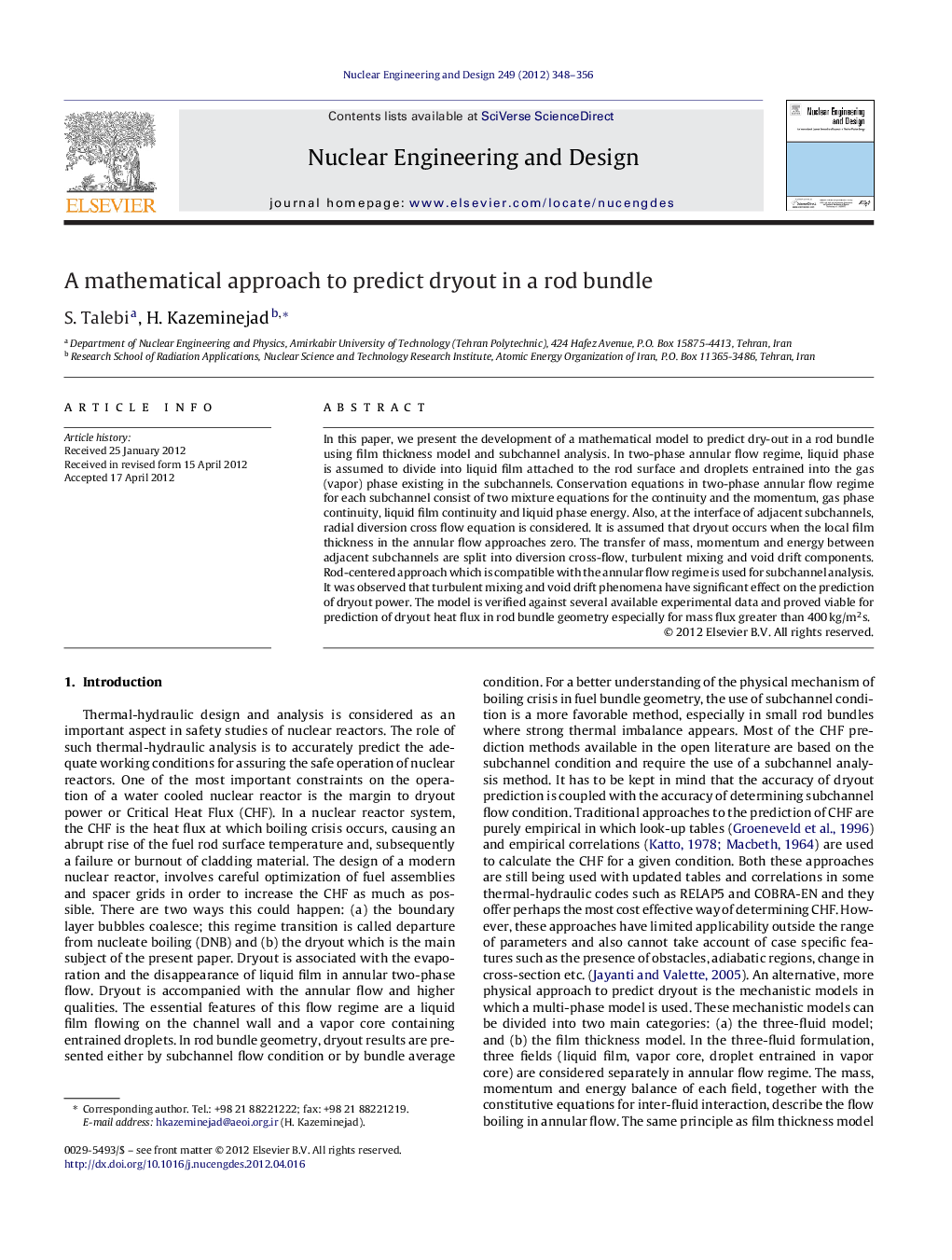| کد مقاله | کد نشریه | سال انتشار | مقاله انگلیسی | نسخه تمام متن |
|---|---|---|---|---|
| 297195 | 511750 | 2012 | 9 صفحه PDF | دانلود رایگان |

In this paper, we present the development of a mathematical model to predict dry-out in a rod bundle using film thickness model and subchannel analysis. In two-phase annular flow regime, liquid phase is assumed to divide into liquid film attached to the rod surface and droplets entrained into the gas (vapor) phase existing in the subchannels. Conservation equations in two-phase annular flow regime for each subchannel consist of two mixture equations for the continuity and the momentum, gas phase continuity, liquid film continuity and liquid phase energy. Also, at the interface of adjacent subchannels, radial diversion cross flow equation is considered. It is assumed that dryout occurs when the local film thickness in the annular flow approaches zero. The transfer of mass, momentum and energy between adjacent subchannels are split into diversion cross-flow, turbulent mixing and void drift components. Rod-centered approach which is compatible with the annular flow regime is used for subchannel analysis. It was observed that turbulent mixing and void drift phenomena have significant effect on the prediction of dryout power. The model is verified against several available experimental data and proved viable for prediction of dryout heat flux in rod bundle geometry especially for mass flux greater than 400 kg/m2s.
► Dryout power in rod bundles is predicted using a subchannel approach.
► Anunular flow film thickness model and conservation equations are solved numerically.
► The fluid transfer is subdivided into turbulent mixing, void drift and diversion cross-flow.
► Comparison with measured data proved viable for mass flux greater than 400 kg/m2s.
► We found dryout prediction to depend on turbulent mixing and void drift parameters.
Journal: Nuclear Engineering and Design - Volume 249, August 2012, Pages 348–356